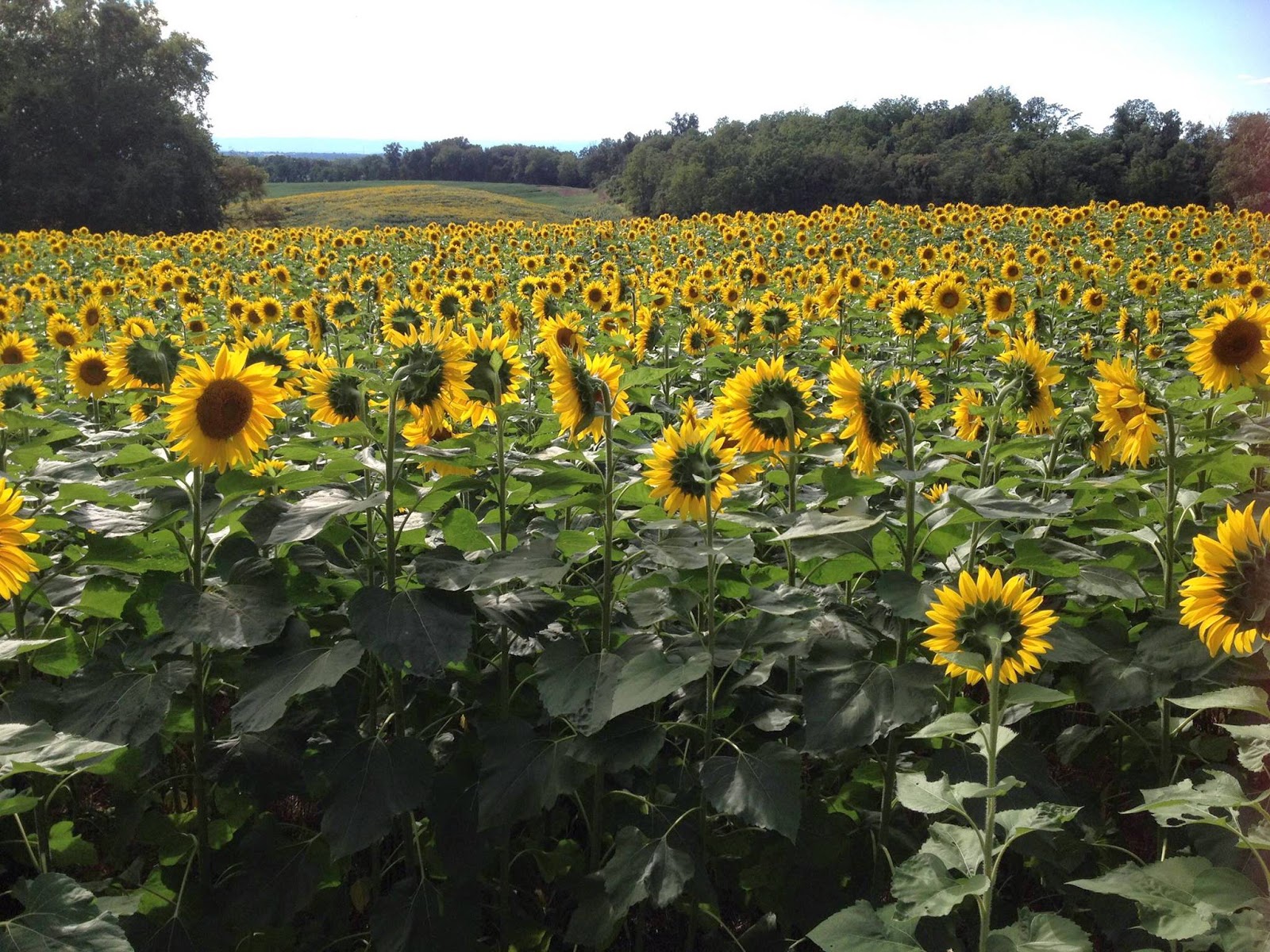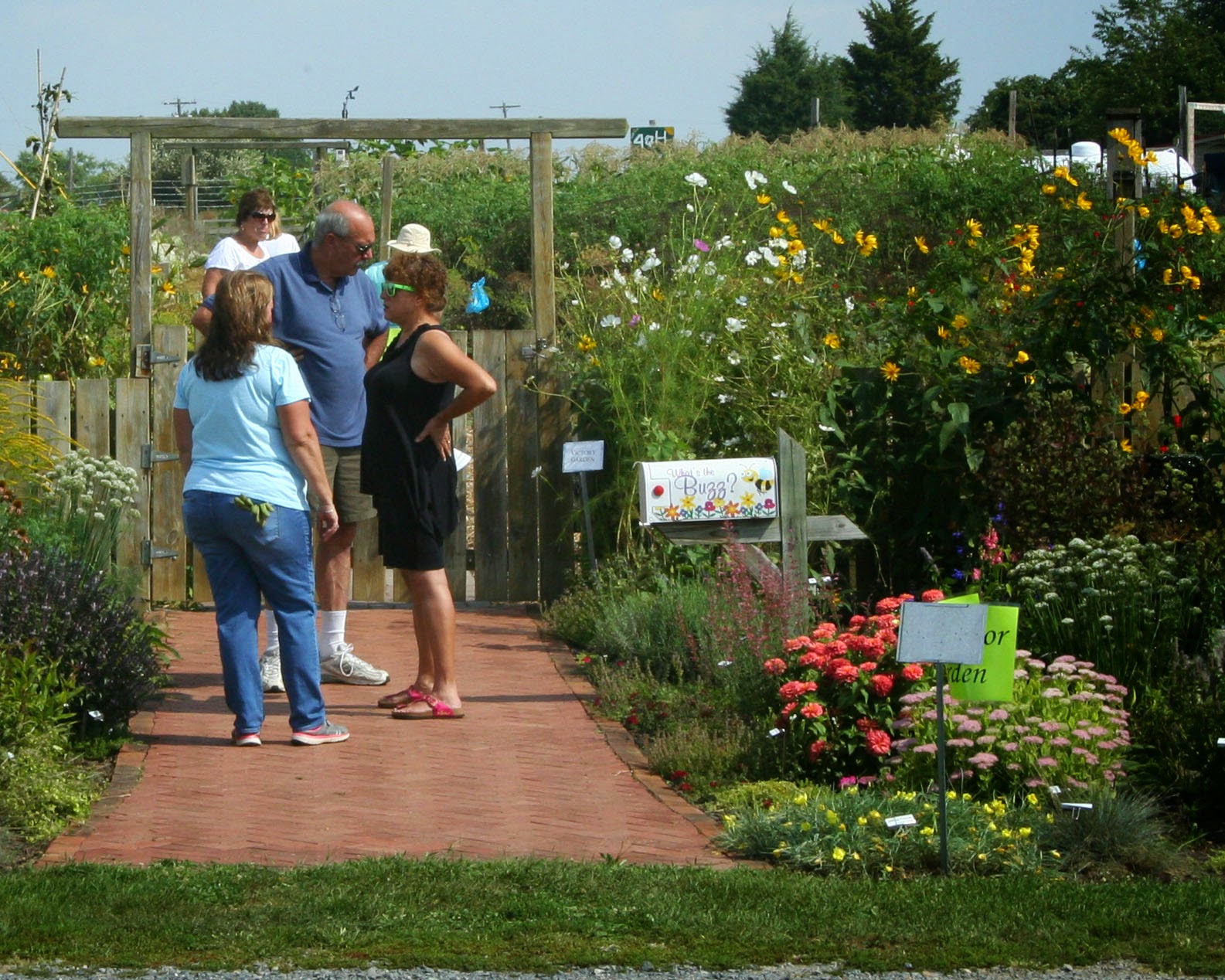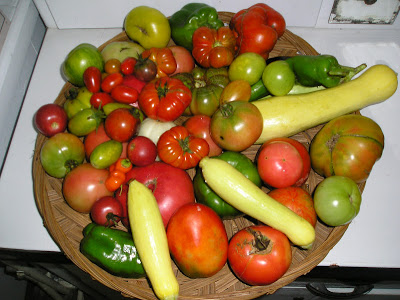By Carol
Kagan, Penn State Master Gardener, Franklin County
 |
| Three on a hay bale (C.Kagan) |
School’s back
in session and the “back to school” items have been pushed to the rear shelves.
Halloween, harvest time, Thanksgiving and, yes, Christmas and all the other
mid-winter holidays have taken over.
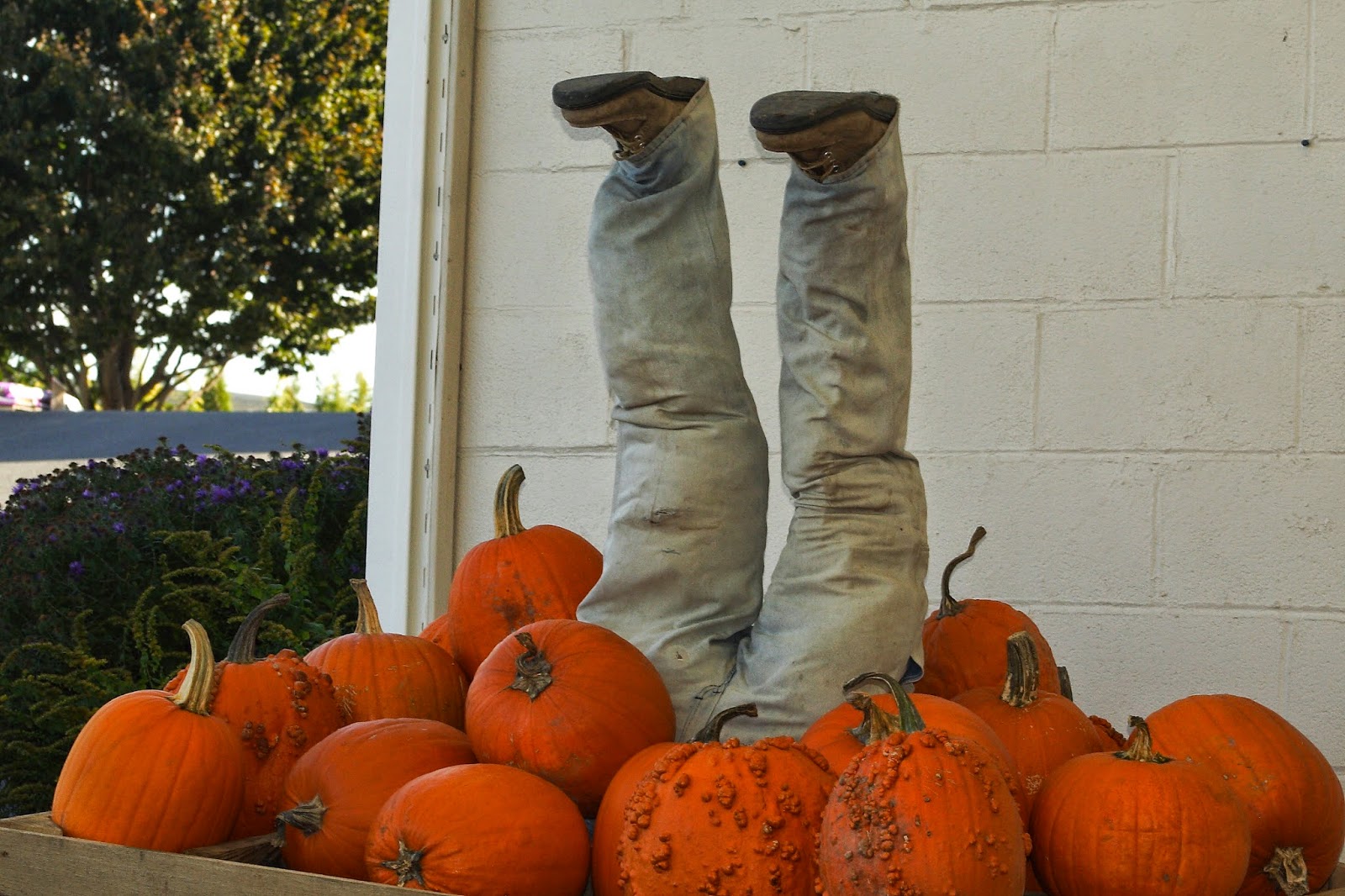 |
| Heels over head in the pumpkin bin (C.Kagan) |
If you grew
pumpkins this year and they survived any groundhogs (the nemesis in the 4-H
Achievement Garden this year), squash bugs, squash vine borer, cucumber
beetles, or aphids, you have the makings for not only Jack-O-Lanterns but
pumpkin seed snacks and pumpkin flavored foods.
Harvesting
Pumpkins
Although a
light frost is not damaging to pumpkins, they should be harvested before a hard
freeze. To see if a pumpkin is ready to harvest check the stems. The stems
should be dry and the skin should not break when pressed by a thumbnail.
 |
| Don't carry pumpkins by the stem (WikiCommons) |
To harvest,
cut the fruit from the vine with pruners or loppers. Leave a long section of
the stem attached. Avoid breaking the skin and bruising fruit when handling. Penn
State Master Gardener Emelie Swackhamer, Lehigh County, also cautions not to
pick the pumpkin up by the stem as it can snap and a falling pumpkin can get
broken or even hurt your foot. Until you are ready to use them, pumpkins will
store for two to three months with temperatures above freezing and below 65° F.
Jack-O-Lanterns
Swackhamer
posted tips online for picking the best pumpkins for carving. In choosing a
pumpkin look for one without rotten spots or scrapes, with a green stem
(handle) firmly attached, and that sits solidly on the ground. Lighter orange
pumpkins tend to be easier to carve because their walls are thinner, but they
also may not keep as long. Darker orange pumpkins tend to have thicker walls
and are often harder to carve, but they often last longer because their rind is
harder.
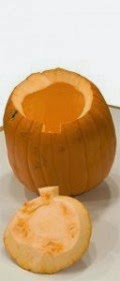 |
| Cut out a lid (Christine S) |
Use one of
the serrated pumpkin-carving knives instead of a sharp kitchen knife. Younger
children should always be supervised but more importantly, this is an ideal
activity for the family – parents and children. Cut a circle around the stem at
the top and remove it. This is the lid. If you plan to use a candle and put the
lid back on, be sure to remove most of the pulp and cut notches in three or four
places around the edge of the lid.
 |
| Scoop out the "stringy stuff" (WikiCommons) |
Scoop out the
seeds* and stringy stuff, scraping the sides. This is easily accomplished with
a metal spoon. Now carefully carve designs through the walls of the pumpkin,
cutting from the outside. Use a glow stick to light your pumpkin so you will not have to worry about fire.
The West Virginia Extension Service suggests, after
carving, dipping the pumpkin in a large container of bleach and water (use a 1
tsp: 1 gal. mix). Bleach will kill bacteria and help your pumpkin stay fresh
longer. Once completely dry, (drain upside down), add 2 tablespoon of vinegar
and 1 teaspoon of lemon juice to a quart of water. Brush this solution onto
your pumpkin to keep it looking fresh for weeks. Another suggestion is to cover
the carved areas and inside with petroleum jelly to keep if from drying out.
 |
| Pie is one way to eat pumpkins (WikiCommons) |
Pumpkin
Eating
Pumpkins are
an especially hardy crop, dark orange in color and loaded with both alpha and
beta carotene. These micro-nutrients are the phytochemicals, or “plant
chemicals,” needed to form vitamin A. An essential component in our daily diet,
vitamin A promotes the formation of a strong immune system, healthy skin and
clear vision.
Pumpkins come
in many varieties and are cultivated and used for a multitude of reasons. One
example is the “pie” pumpkin, specifically developed for baking and/or cooking
purposes. Ideally, pie pumpkins should exhibit a deep orange color. After
halving, remove the seeds* and stringy stuff then cook this pumpkin, either in
the oven for 30 -60 minutes at 350°, or microwave on high for 15 minutes. Now
you can peel the pumpkin and cut or puree it for use in soup, muffins, pudding
or pies.
*Pumpkin
Seed Snacks Preheat the oven to 250°F.
It’s icky but
fun to pick through the stringy stuff and pull out the seeds to make snacks.
Discard any broken seeds and clean off all the stringy stuff. Follow the recipe
below for 2 cups of seeds.
Ingredients:
1 Qt. water
2 Tbsp. salt* (may be omitted)
2 C. pumpkin seeds, cleaned and dried
1 Tbsp.
vegetable oil or melted, unsalted butter
Bring the
water (and salt) to a boil. Add the seeds and boil for 10 minutes. Drain the
seeds, spread on kitchen towel or paper towel and pat dry.
Put the seeds
in a bowl and toss with oil or melted butter. Stir in salt or any other herb or
seasoning desired. Try onion or garlic salt before roasting. Like spicy food?
Try a Cajun or Mexican mix of dried spices.
Spread evenly
on a large cookie sheet or roasting pan. Place pan in the preheated oven and
roast for 30-40 minutes. Stir every 10 minutes, until crisp and golden brown.
Remove and cool the seeds. Shell and eat them or pack them in plastic bags and
refrigerate until ready to eat.
Cool the
seeds, then shell and eat or pack in air-tight containers or zip closure bags
and refrigerate until ready to eat.
Visit these
links for more information:




















